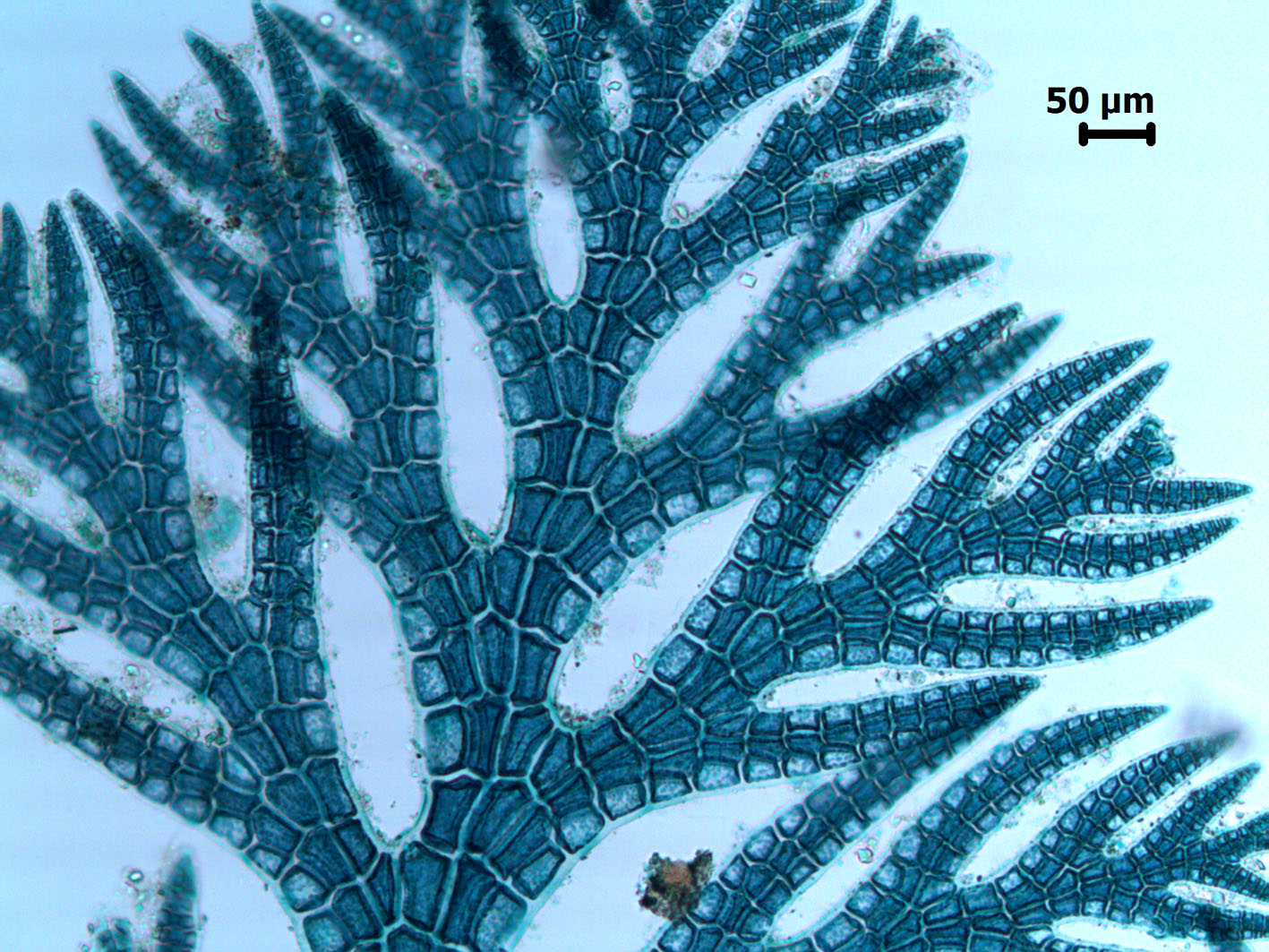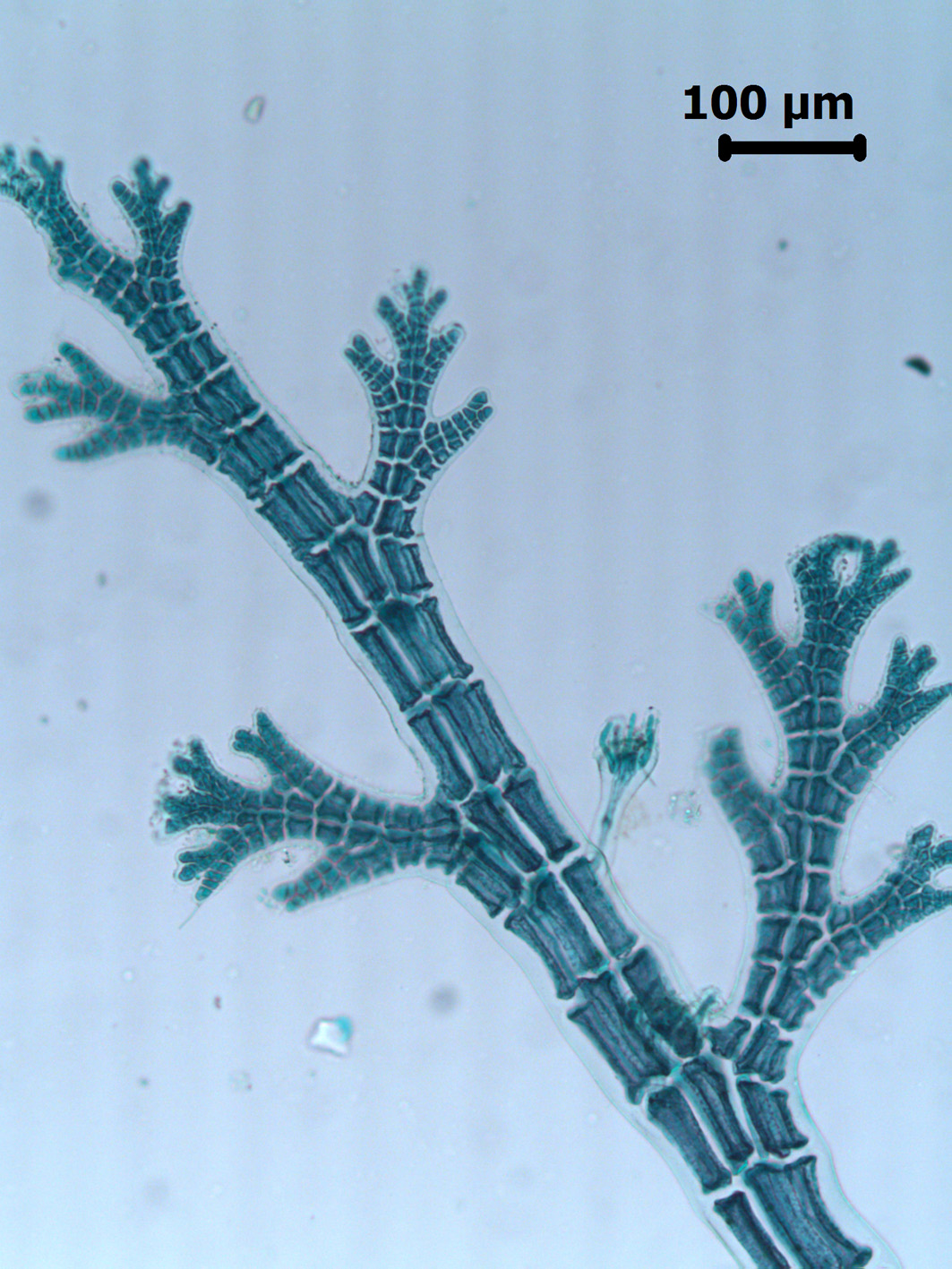Seaweeds of the South African South Coast


Order Ceramiales
Family Rhodomelaceae
Pterosiphonia sp. indet
Plants about 1 cm tall, red, complanate. Erect branches 2-3 times pinnately branched from every second or third segment in alternate series; bases of laterals confluent with main axis for two to three segments. Segments with five pericentral cells, completely uncorticated; segmentation visible in all parts of plants; transparent axial line usually visible though main branches; rows of outer cells on branches often somewhat transparent. No reproductive structures seen. Prostrate axes up to ca. 200 µm wide.
Collections, ecology and regional distribution
Recorded from Bird Island ( Algoa Bay) and Kini Bay near East London.
Note: This species was reported as P. parasitica from Bird Island (Anderson & Stegenga, 1989), a species which however is reported to have 6-7 pericentral cells. Although rather similar to P. stangerii in overall appearance, our entity is completely uncorticated and has rows of semi-transparent cells along the outside of many branches. Furthermore, the absence of cortication in the main axes reveals a thin transparent line formed by the spaces between pericentral cells.
Note: this taxon is not the same as Pterosiphonia sp. of Stegenga et al (1997): that species is now known as P. stegengae Savoie & Saunders.

Pterosiphonia sp., habit, stained slide (Kini Bay, west of East London).

Pterosiphonia sp., detail (Bird Island, stained slide).

Pterosiphonia sp., (Bird Island), cell detail (stained slide).

Pterosiphonia sp., (Kini Bay), branching and outer “clear” cells (stained slide).

Pterosiphonia sp., (Kini Bay, stained slide), prostrate axis with bilateral arrangement of young branches.
References Pterosiphonia sp. indet
Anderson, R.J. & H. Stegenga. 1989. Subtidal algal communities at Bird Island, Eastern Cape, South Africa. Botanica Marina 32: 299-311.
Savoie, A.M. & Saunders, G.W. 2016. A molecular phylogenetic and DNA barcode assessment of the tribe Pterosiphonieae (Ceramiales, Rhodophyta) emphasizing the Northeast Pacific. Botany 94: 917-939, 8 figs.
Stegenga, H., Bolton, J.J. & R. J. Anderson. 1997. Seaweeds of the South African west coast. Contributions from the Bolus Herbarium 18: 655 pp.
Cite this record as:
Anderson RJ, Stegenga H, Bolton JJ. 2016. Seaweeds of the South African South Coast.
World Wide Web electronic publication, University of Cape Town, http://southafrseaweeds.uct.ac.za; Accessed on 07 January 2026.